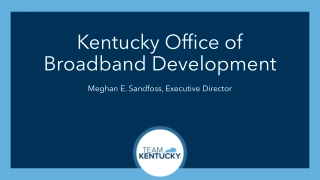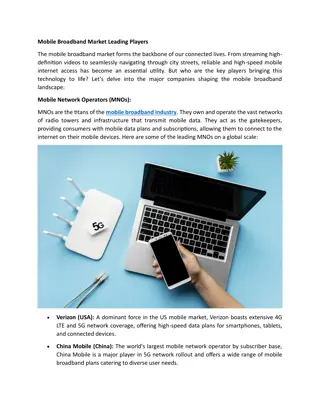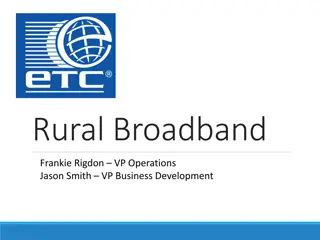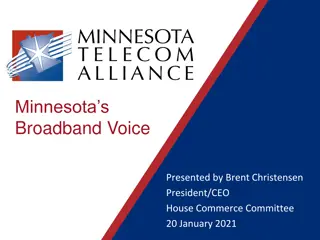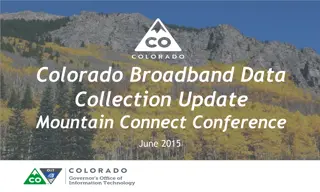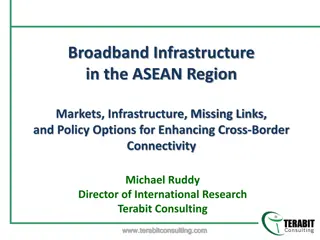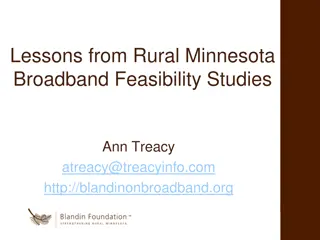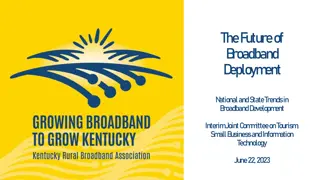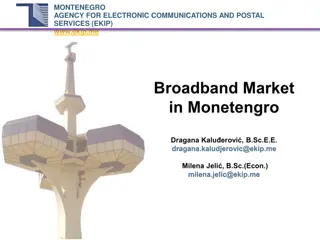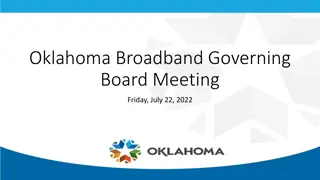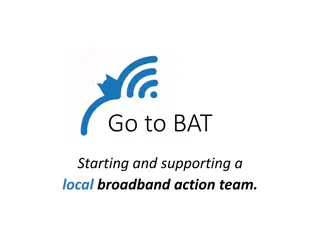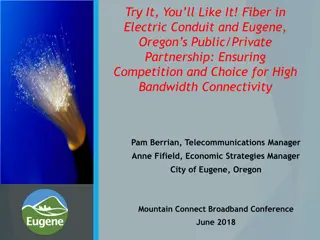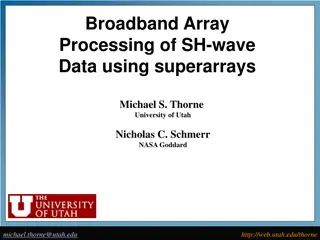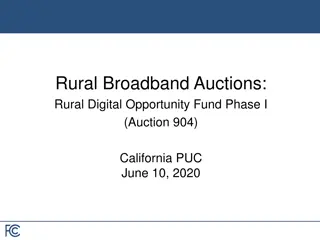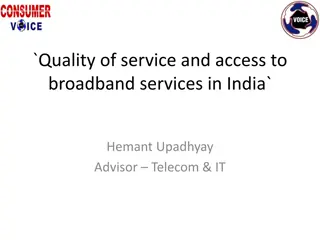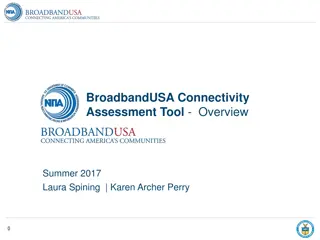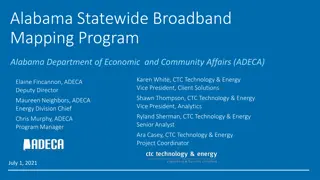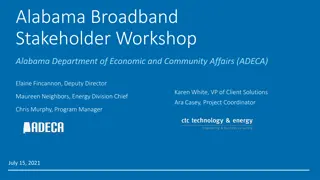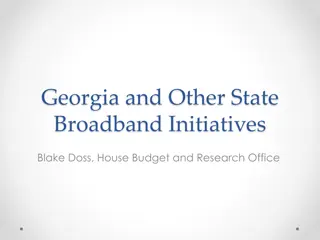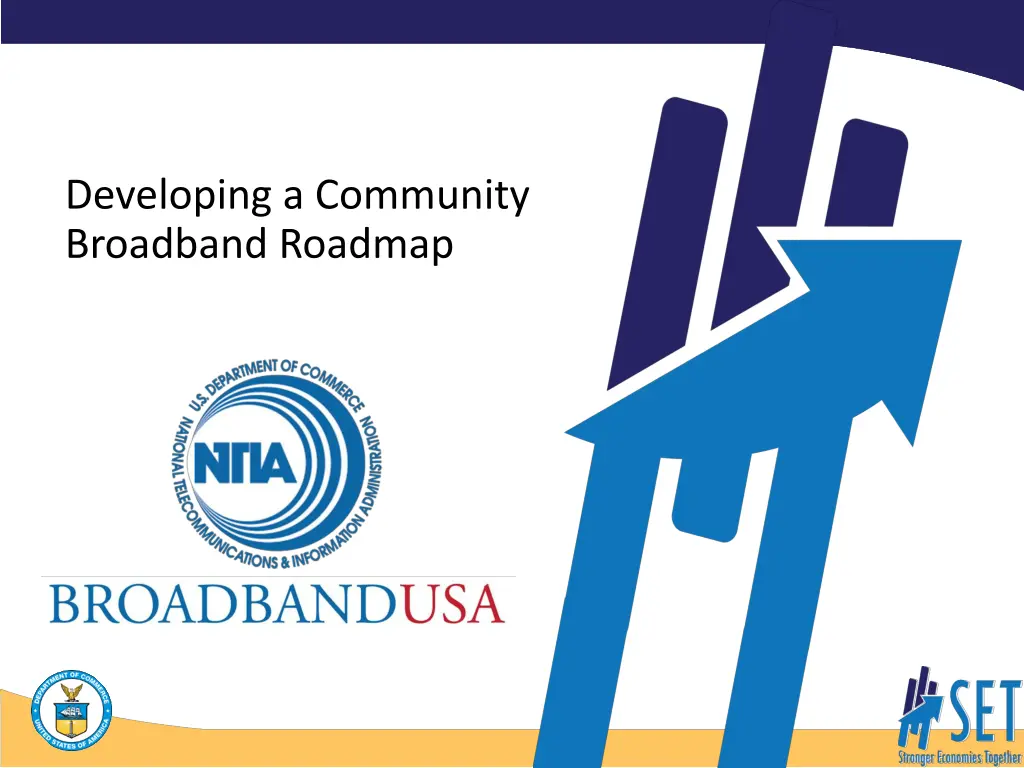
Building Successful Broadband Partnerships: Key Steps and Structures
Learn how to develop a community broadband roadmap, identify partnership opportunities, and build infrastructure collaborations. Discover the key steps to forming partnerships and explore various partnership structures to enhance broadband development efforts.
Download Presentation

Please find below an Image/Link to download the presentation.
The content on the website is provided AS IS for your information and personal use only. It may not be sold, licensed, or shared on other websites without obtaining consent from the author. If you encounter any issues during the download, it is possible that the publisher has removed the file from their server.
You are allowed to download the files provided on this website for personal or commercial use, subject to the condition that they are used lawfully. All files are the property of their respective owners.
The content on the website is provided AS IS for your information and personal use only. It may not be sold, licensed, or shared on other websites without obtaining consent from the author.
E N D
Presentation Transcript
Developing a Community Broadband Roadmap
Part I Recap A Community Broadband Roadmap should include: Vision and goals Anticipated benefits Strategy and action plan The Roadmap can also identify new partnership opportunities
Part II: Building Partnerships What will you gain from a partner?: o Filling a knowledge gap o Reaching new stakeholders o Accessing additional funding sources? Identify potential partners that increase: o Cost-Sharing o Revenue Potential o Expertise and Support o Institutional Collaboration
4 Key Steps to Forming Partnerships Step 1. Understand Partnership Structures Step 2. Find the Right Partners Step 3. Determine Each Partner s Contribution Step 4. Develop a Framework
Step 1: Partnership Structures Commercial provider builds, owns, and operates the infrastructure Private Sector-Led Public entity owns the network Private or nonprofit partners construct, operate and maintain the infrastructure Government-Led & Private Supported Government-Led & Non-Profit Supported Government initiates with city Non-profit organizations carry out the mission Public or private commercial providers and government entity jointly invest in infrastructure Joint Ownership Model 6
Successful Partnerships Private Sector-Led Government-Led, Private Supported Government-Led, Nonprofit Supported Joint Ownership
Step 2: Consider the Right Partners Pick partners carefully Engage a comprehensive set of partners Team should include: A mix of skills Varying backgrounds Common goal Characteristics of a Broadband Partnership Win-win relationship Credibility with stakeholders Capacity to add technology Ability to bring users Agreements on communication Compliance with regulations Diversity
Assess Partners Strengths Increase credibility and awareness Increase sustainability through financial support Funding Awareness Facilitate delivery to appropriate places or people Operational Efficiency Improve the project s effectiveness Market Reach Accelerate new services and decrease expenses Add a sounding board to improve quality and worth Quality Expertise
Partner Benefits Private-Sector Providers Expertise, broadband capacity, network interconnection Foundations & Grant- Making Organizations Broadband support, access, rural service, economic development Educational Institutions & Libraries Anchor facilities, expertise, outreach Healthcare Institutions Expertise, broadband capacity, network interconnection Anchor tenants, telemedicine operations Non-Profit Organizations Economic Development Organizations Initiatives, planning assistance, finding broadband champions
Step 3: Determine Partners Contribution Consider gains and contributes Develop a graphic illustration of contributions Community Partner 2 Partner 1 Funding Resources Assets Resources Funding Management Staff Network Staff Project Planning Network Build Network Operations Leased Fiber
Consider the Contributions Source of funding Funding commitments and requirements Valuations of contributions Timeline Funding Who provides assets and timeline? Who owns assets and transfers? Who maintains inventory? Agreements on distribution, maintenance and accounting Assets Resources being provided Scope, availability, and experience of personnel Customer service Resources
Step 4: Develop the Partnership Framework Frameworks help communities: o Develop partnership agreements o Assess the regulatory and operational context o Maintain strong relationships Informal Formal Mutual Agreement Memorandum of Understanding Contract with Performance Penalties Written Contract Handshake 13
Key Components of a Partnership Contract A partnership contract can help parties identify roles and responsibilities Expectations Parties involved Expected deliverables Roles and responsibilities Dependencies/risks Project timeline Intellectual property rights Cost-sharing, rates, charges Terms for dispute resolution Procedures to manage changes 14
As communities work through the four steps, consider What types of partners should be considered? What criteria should drive partner selection? What methods should be used to formalize the selection?
Resources Federal Funding Guide https://www2.ntia.doc.gov/files/powerbroadband_070517.pd f (note please put link to new toolkit- the Power of Broadband partnerships) Public-Private Partnerships Guide Community Broadband Roadmap Toolkit Introduction to Stakeholder Outreach For General Information: 202-482-2048 broadbandusa@ntia.doc.gov http://www.ntia.doc.gov/broadbandusa To Request Technical Assistance: Submit Intake Form

